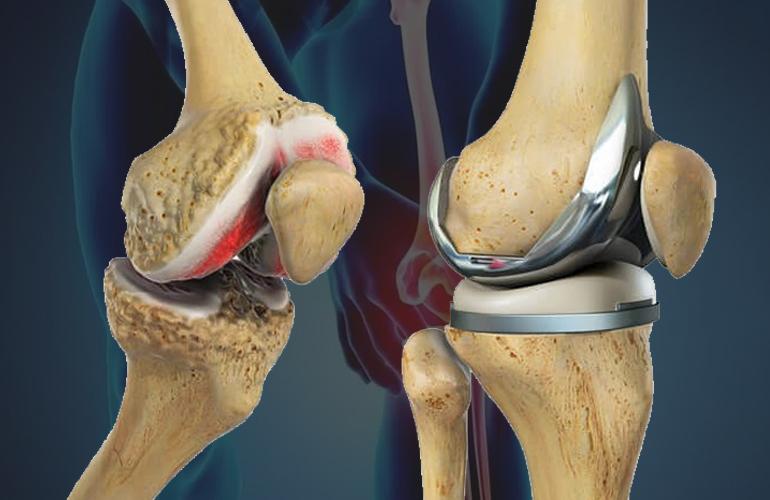Knee Replacement
Knee replacement, also known as knee arthroplasty, is a surgical procedure to replace a damaged or worn-out knee joint with an artificial implant. It is typically recommended for individuals with severe knee pain and mobility issues due to conditions like osteoarthritis, rheumatoid arthritis, or injury.
Types of Knee Replacement:
- Total Knee Replacement (TKR): The entire knee joint is replaced with a prosthetic joint.
- Partial Knee Replacement (PKR): Only the damaged part of the knee is replaced.
- Revision Knee Replacement: A second surgery to replace a previously implanted artificial knee joint.
Procedure:
- The surgeon removes the damaged bone and cartilage from the thighbone (femur), shinbone (tibia), and sometimes the kneecap (patella).
- Artificial components made of metal, plastic, or ceramic are implanted to restore normal knee function.
- The surgery typically lasts 1–2 hours.
Recovery and Rehabilitation:
- Patients usually stay in the hospital for a few days.
- Physical therapy is essential for regaining strength and mobility.
- Full recovery can take several weeks to months.
Benefits:
- Pain relief
- Improved mobility
- Better quality of life
Risks:
- Infection
- Blood clots
- Implant wear over time
Knee replacement is a common and successful procedure that can significantly improve a patient's life. However, it requires careful consideration and post-surgery rehabilitation.

